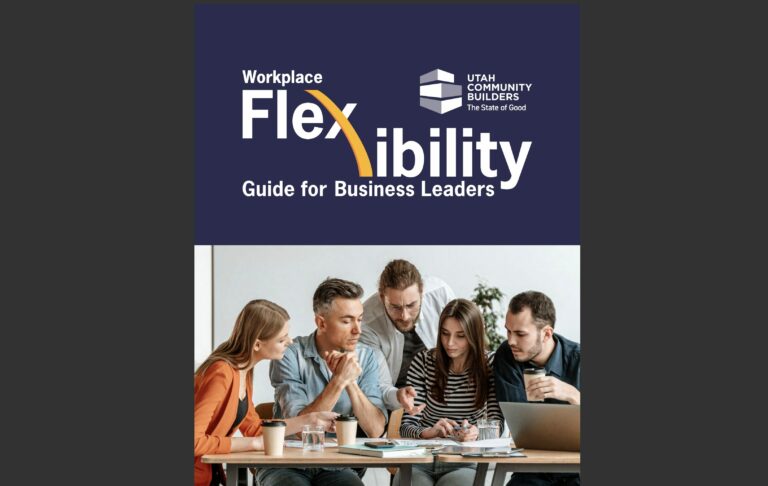Utah Community Builders, the Salt Lake Chamber’s nonprofit foundation, has released the “Workplace Flexibility Guide,” a new resource for the business community to learn about possibilities for workplace flexibility, ways to manage it and how it can be a catalyst for a high-performing work culture and employee wellness.
“During the last several years, Utah workforce habits and preferences have changed dramatically,” said Kabi Catalano, executive director of Utah Community Builders. “We now know that workplace flexibility empowers employees and can foster an environment of trust, inclusivity and productivity. Any business in our growing community that wants to set themselves apart and thrive needs to consider flexible working offerings.”
The new guide explains that while providing flexible work environments and enhanced benefits requires resources, it also delivers a strong return on investment by attracting and retaining top talent, increasing productivity and supporting team members’ overall well-being.
“Utah Community Builders is an integral part of the Salt Lake Chamber’s ability to champion community prosperity,” said President and CEO of the Salt Lake Chamber, Derek Miller. “With the Workplace Flexibility Guide, they are handing business leaders a roadmap to success. By implementing flexibility practices, leaders can set the stage for improved employee well-being, a healthier company culture and increased productivity and dedication – all of which lead to the community prosperity that we are striving to achieve.”
In addition to highlighting why workplace flexibility should be prioritized, the resource also gives suggestions based on business size. For many years, offering flexible options at small businesses has seemed impossible. This resource can help companies of all sizes find options that work well for their business model and situation.
For small businesses, some options highlighted in the guide include:
- Hybrid structure: Offer flexible remote work options as workload and workflow allow. This saves commute time and provides an optimal work schedule. 85% of employees report higher job satisfaction in a hybrid work model.
- Job sharing: Splitting the responsibilities of a single full-time position between two employees can offer increased flexibility in work hours and provide shared benefits. This can reduce workload burdens and enhance job satisfaction.
- Financial wellness initiatives: Empower employees with knowledge and resources so they can make decisions that will lead to their personal prosperity and stability in life. Connect employees to financial planners for investment advice, retirement planning, debt management and budgeting.
For medium to enterprise-sized businesses that have more available resources, the additional suggestions to consider include:
- Paid parental leave: Employees who receive support during major life transitions tend to exhibit increased engagement and productivity upon their return to work.
- Compressed workweeks: Give employees the option to work extended hours on selected days, enabling shorter workweeks.
- Adaptable benefits packages: Offer a variety of flexible benefits, encompassing health care choices, wellness initiatives, tuition compensation and financial planning support. These cater to the diverse needs and personal development of employees.
“Using the Workplace Flexibility Guide to direct changes and innovations within workplaces will be transformative for businesses in our community,” Catalano said. “The options and possibilities for business leaders to consider can create more efficient, higher performing and more fulfilling workplaces statewide.”
To view the “Workplace Flexibility Guide,” click here.


